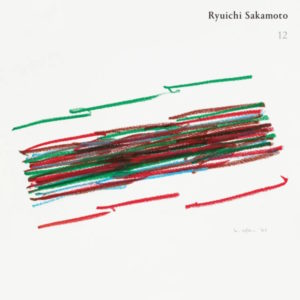I’ve been listening to the new Sakamoto release all morning on repeat. It’s an ambient music release of the highest order. I understand that at first it wasn’t meant for release, but were intended as a series of diary entries which were made while he was undergoing cancer treatments between 2021 and 2022, part of his ongoing 10 year battle with the disease. He describes these recordings as a casual way to release himself into the peaceful worlds of his synthesizers and piano playing: “I had no intention of composing something; I just wanted to be showered in sound.” Lucky for us, in the process, an album was created.
12 is a series of pieces whose titles are dates. The first seven pieces are dronal, employing highly processed synthesizers and ambient piano to create peaceful sound sculptures that drip with gorgeous reverberant spaces. Indeed, space is one the main ingredients in these immersive sound baths. When I first put the album on, so convincing were the sonic dimensions that seem to hang in the air and fill the room, I almost thought it was in surround sound.
Some of the tracks remind me of Brian Eno – with their drifting ambient piano in gauzy washes of spacious synth pads, all drifting in cosmic trails of reverb, how could they not? Some of the tracks seem almost to have had a mic on the maestro and if one listens carefully, one can hear his actual breathing. It make sense, because these tracks are felt with the breath; most have no discernible pulse.
Something changes when we arrive at track 8. Out of the ambient world we been engulfed in, comes a Satie-like Sarabande. It’s a beautiful miniature solo piano piece, with more than a hint of Sakamoto’s long term love affair with the music of Tom Jobim. Satie meets Jobim – what a lovely marriage.
The album holds its gaze on a couple more piano pieces that feel more compositional than their predecessors, then goes out quietly in one minute of soft bells. And once again, this listener is called to take the journey again.
